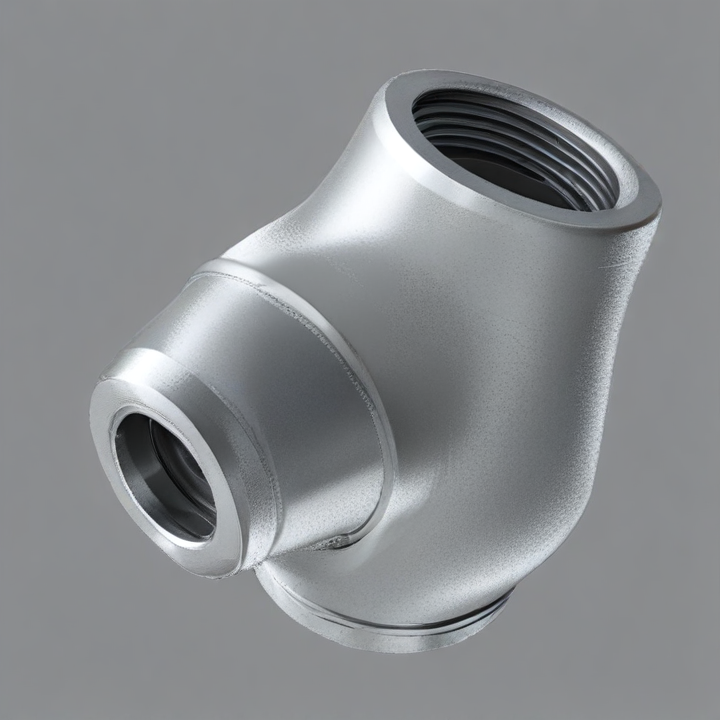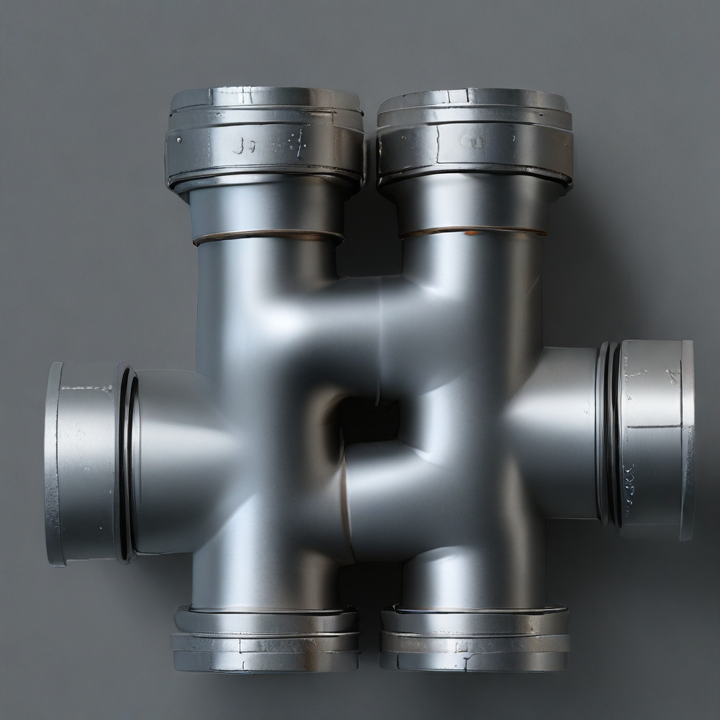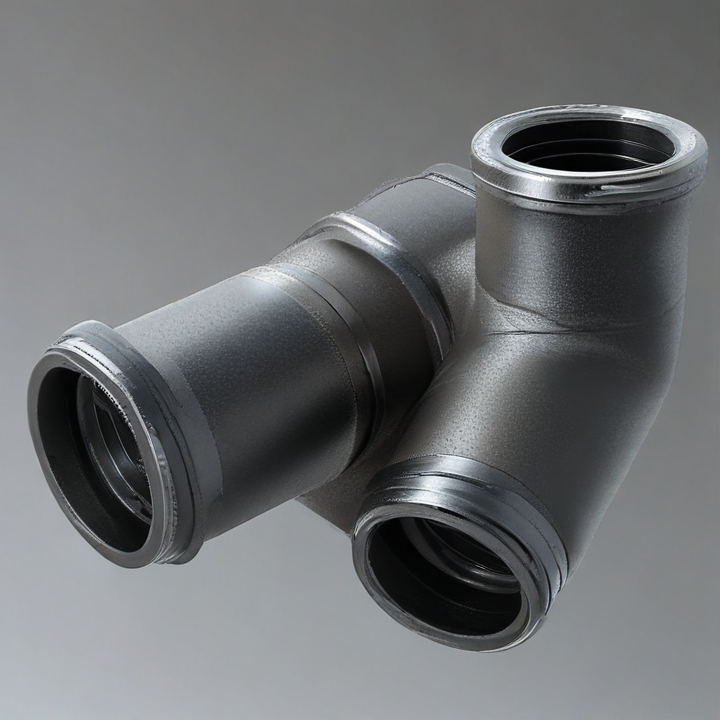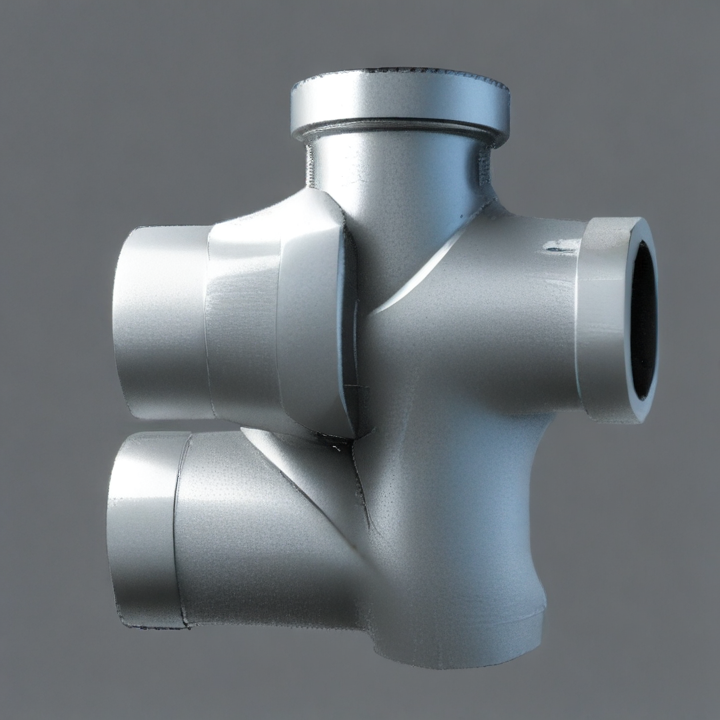y fittings Safety Certifications
Y fittings, also known as wye fittings, are integral components in various industrial and commercial piping systems. They require specific safety certifications to ensure they meet stringent operational and safety standards. Key safety certifications for Y fittings include:
1. ISO 9001:2015
– Description: This quality management system (QMS) certification ensures that the manufacturing processes of Y fittings meet international standards for consistency and quality.
– Relevance: It guarantees that the fittings are produced under controlled and standardized conditions, ensuring reliability and safety.
2. ASME (American Society of Mechanical Engineers)
– Description: ASME certifications, particularly the ASME B31.1 and B31.3, cover piping materials’ design, manufacturing, testing, and inspection.
– Relevance: Y fittings certified under ASME standards meet rigorous safety criteria for high pressure and temperature applications, common in power plants and refineries.
3. ASTM (American Society for Testing and Materials)
– Description: ASTM standards, such as ASTM A234 for steel and ASTM D2467 for PVC, ensure that Y fittings are made from materials that meet specific mechanical and chemical properties.
– Relevance: Compliance with ASTM standards ensures that the fittings can withstand specified mechanical stresses and corrosive conditions.
4. ANSI (American National Standards Institute)
– Description: ANSI sets guidelines for the dimensions and tolerances of fittings (like ANSI B16.9 for factory-made wrought steel buttwelding fittings).
– Relevance: Ensures the fittings will fit correctly and function safely within the piping systems.
5. NSF International
– Description: NSF certifications such as NSF/ANSI 61 ensure that the materials used in Y fittings are safe for contact with drinking water.
– Relevance: Critical for installations in potable water systems, ensuring that harmful contaminants are not introduced into the water supply.
6. CE Marking (Conformité Européenne)
– Description: Required for products sold in the European Economic Area (EEA), CE marking indicates conformity with health, safety, and environmental protection standards.
– Relevance: Indicates the Y fittings are safe and reliable for use in Europe.
Conclusion
Each of these certifications plays a crucial role in ensuring the safety, reliability, and compliance of Y fittings across various applications. Proper certification ensures the fittings meet legal and industry-specific standards, mitigating risks associated with operational failures.
List Reference Technical Parameters of “y fittings”
Certainly! “Y fittings” or “wye fittings” are components used in piping systems to combine or split fluid flow. Here are some key technical parameters to consider:
1. Material: Common materials include PVC, CPVC, stainless steel, brass, cast iron, and copper, dictating the fitting’s chemical resistance and durability.
2. Size: Sizes typically range from 1/2 inch to several inches in diameter, corresponding to the pipeline they connect.
3. Pressure Rating: This indicates the maximum pressure the fitting can withstand, generally specified in pounds per square inch (PSI). Common ratings are 150 PSI, but it can vary based on material and design.
4. Temperature Rating: The permissible temperature range for the fitting. For instance, PVC can usually handle up to 140°F, while metals like stainless steel can tolerate much higher temperatures.
5. Angle of Branches: Typically, Y fittings have branches at 45° or 60° angles relative to the main line. This affects the flow characteristics and pressure drop in the system.
6. Connection Type: End connections can be threaded, flanged, welded, or slip-fit. The type of connection determines the ease of installation and the integrity of joints.
7. Flow Direction: Determines whether the fitting is suitable for dividing or combining flow paths.
8. Compliance Standards: Must meet industry standards like ASTM, ANSI, or ISO to ensure reliability and compatibility, especially in regulated industries.
9. Dimension Standards: The dimensional standards (e.g., ASME B16.9) ensure that fittings will fit properly with other standard components.
10. Application Suitability: Different applications (e.g., potable water, HVAC, chemical processing) might have specific requirements for fittings.
By considering these technical parameters, you can ensure the selected Y fitting will perform effectively within its intended application.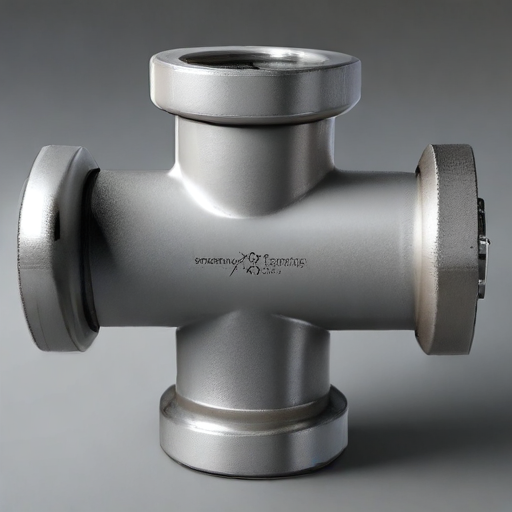
List Product features of “y fittings”
Y fittings, also known as wye fittings, are essential components in various plumbing, irrigation, and industrial systems. Here are some prominent product features:
1. Material Variety:
– Made from different materials such as PVC, stainless steel, brass, and copper, accommodating various requirements for durability, chemical resistance, and cost.
2. Divergent Angles:
– Typically manufactured with a 45-degree branch angle which helps in smooth directional changes for flow efficiency.
3. Sizes and Diameters:
– Available in a wide range of sizes to fit various pipe dimensions, ensuring adaptability to different systems.
4. Connection Types:
– Offered with different connection ends such as threaded, socket weld, or slip-fit options, providing flexibility for easy installation and compatibility with existing systems.
5. Corrosion Resistance:
– For materials like PVC and stainless steel, they offer excellent resistance against corrosion, extending the lifespan of the installation in adverse environments.
6. Pressure Ratings:
– Built to handle different pressure levels, making them suitable for both low-pressure plumbing systems and high-pressure industrial applications.
7. Versatile Applications:
– Utilized in various systems including water supply lines, drainage systems, and irrigation networks, highlighting their multipurpose nature.
8. Flow Efficiency:
– Designed to reduce turbulence and resistance within the flow, thereby enhancing the overall efficiency of the fluid movement within the system.
9. Compatibility with Standards:
– Often manufactured in compliance with industry standards (such as ASTM for PVC or ANSI for steel) ensuring reliability and uniformity in quality.
10. Ease of Installation and Maintenance:
– Simple design fosters straightforward installation and minimal maintenance needs, saving both time and costs for users.
11. Temperature Tolerance:
– Specific models are tailored to perform effectively across a range of temperatures, making them suitable for various environmental conditions.
12. Customization:
– Options for custom-made fittings are available to suit unique system requirements, providing bespoke solutions.
These features collectively make Y fittings a vital component in ensuring efficient and reliable performance across diverse applications.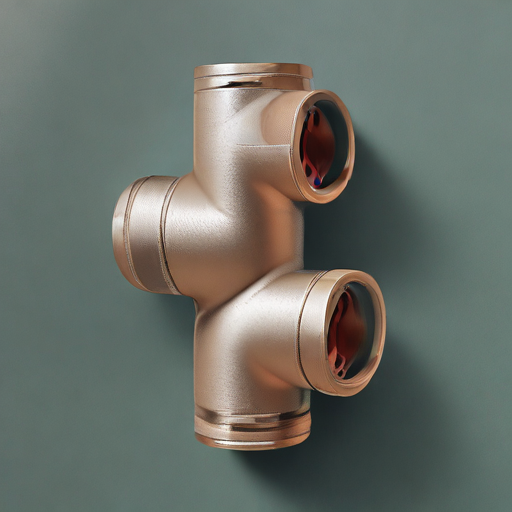
List Various Types of “y fittings”
Y-fittings are essential components in plumbing, irrigation, automotive, and industrial systems, allowing fluids or gases to be split or combined. Various types exist, each designed for specific applications:
1. Standard Y-Fittings: These are the most common type used to split a single pipe into two branches at a 45-degree angle.
2. Barbed Y-Fittings: These fittings have barbed edges that provide a secure connection, ideal for flexible hoses in low-pressure applications like irrigation systems.
3. Threaded Y-Fittings: Equipped with threading on the ends, these fittings are used for secure and leak-proof connections in pipes that require disassembly and reassembly, typical in plumbing and hydraulic systems.
4. Compression Y-Fittings: These have compression ends that provide a secure connection without the need for welding or soldering. They are commonly used in water supply lines.
5. Reducing Y-Fittings: These fittings have one leg with a different diameter, allowing for the transition from one pipe size to another, useful in complex piping systems that require size variations.
6. Sanitary Y-Fittings: Designed for use in food, pharmaceutical, and other sanitary applications, these fittings feature smooth interiors to prevent the growth of bacteria and other contaminants.
7. PVC Y-Fittings: Made from polyvinyl chloride, these are lightweight, resistant to chemicals and corrosion, and commonly used in residential plumbing and irrigation.
8. Metal Y-Fittings: Usually made from brass, stainless steel, or copper, these fittings are durable and suitable for high-pressure and high-temperature applications.
Each type of Y-fitting serves a unique purpose, tailored to the demands of different systems. Selecting the right one involves considering factors like the type of fluid, pressure, temperature, and the materials involved.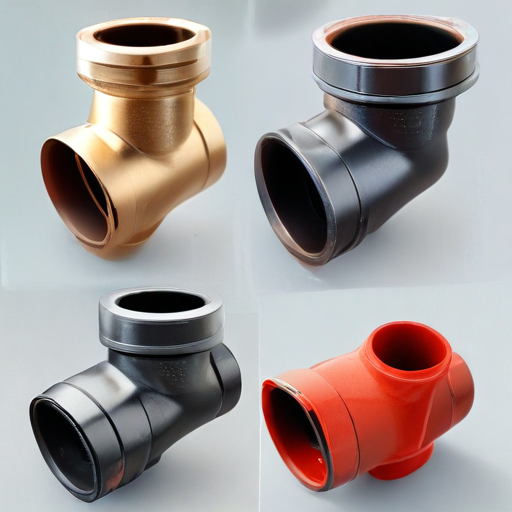
List Application of “y fittings”
Y fittings, commonly used in piping systems, offer versatile applications across various industries due to their shape and functionality. Below are several key applications of Y fittings:
1. Plumbing Systems:
– Wastewater and Drainage: Y fittings are used to combine water flow from two different pipe sections into a single outlet, aiding in efficient wastewater and drainage systems in residential, commercial, and industrial settings.
– Ventilation: Y fittings allow proper venting of gases and prevent backflow in plumbing systems, ensuring the safety and compliance with building codes.
2. Irrigation Systems:
– Agriculture: They are utilized to direct water flow from main lines to multiple field sections, ensuring efficient and uniform water distribution.
– Landscape Irrigation: Used in garden sprinkler systems to manage water distribution from a single supply line to multiple sprinklers.
3. HVAC Systems:
– Air Distribution: Y fittings are integral in directing airflow from main ducts to various branches within heating, ventilation, and air conditioning systems. This ensures balanced and efficient air distribution throughout a building.
4. Industrial Processes:
– Fluid Handling: In manufacturing and processing plants, Y fittings are used to manage the flow of liquids, gases, and slurries, enhancing process efficiency and safety.
– Pneumatic Systems: They are employed to split the air flow efficiently to multiple lines, critical in powering pneumatic tools and machinery.
5. Water Treatment Plants:
– Filtration Systems: Y fittings assist in diverting water to different filtering stages, enhancing the purification and treatment process.
6. Fire Protection Systems:
– Sprinkler Systems: Essential in fire suppression systems, Y fittings distribute water from a primary line to multiple branches, ensuring comprehensive coverage and safety.
In summary, Y fittings are crucial components in systems requiring efficient directional flow management, contributing to the functionality and reliability of plumbing, irrigation, HVAC, industrial, water treatment, and fire protection systems.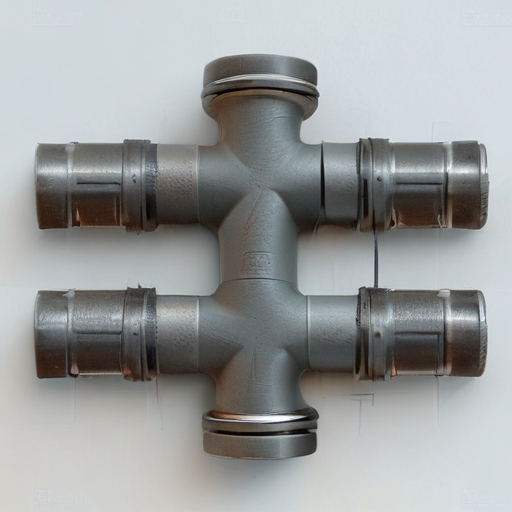
List Buyer Types of “y fittings”
Certainly! “Y fittings” are connectors used in various piping and tubing systems, typically in the form of a Y where three sections can converge or diverge. Different buyers look for Y fittings for various applications, each type having distinct requirements and considerations. Here’s an overview of buyer types:
1. Plumbers and HVAC Technicians:
– Residential Plumbers: Seek reliable, easy-to-install Y fittings for home plumbing systems, often focusing on durability and cost-effectiveness.
– Commercial Plumbers: Require higher-grade materials that can accommodate larger systems and higher pressures found in commercial settings.
– HVAC Technicians: Need Y fittings compatible with heating, ventilation, and air conditioning systems, often emphasizing thermal resistance.
2. Construction Firms:
– Infrastructure Projects: Require Y fittings for water, sewage, and irrigation systems, often needing heavy-duty materials like cast iron or reinforced PVC.
– Building Contractors: Use Y fittings for both plumbing and HVAC installations in new constructions, ensuring compatibility with various building codes.
3. Manufacturing Industries:
– Chemical Plants: Require corrosion-resistant Y fittings (stainless steel or special alloys) to handle reactive substances.
– Food and Beverage Processing: Need sanitary Y fittings made from food-grade materials, ensuring no contamination.
– Pharmaceuticals: Demand high-purity fittings often compliant with stringent standards.
4. Agriculture:
– Farmers and Irrigation Specialists: Look for durable, UV-resistant Y fittings for irrigation systems, capable of enduring harsh outdoor conditions.
5. Home Enthusiasts and DIYers:
– Gardeners: Might use Y fittings for personal irrigation setups, prioritizing ease of use and affordability.
– Hobbyists: Could employ Y fittings in DIY projects, aquariums, or homebrew systems, focusing on variety and availability in smaller quantities.
6. Wholesale Distributors and Suppliers:
– Hardware Stores: Stock a variety of Y fittings to cater to local plumbers and DIY enthusiasts.
– Specialty Suppliers: Provide specific Y fittings for industries like automotive, aerospace, etc., often requiring custom orders or specifications.
Each buyer type emphasizes different factors, such as material quality, durability, cost, compatibility, and compliance with industry standards.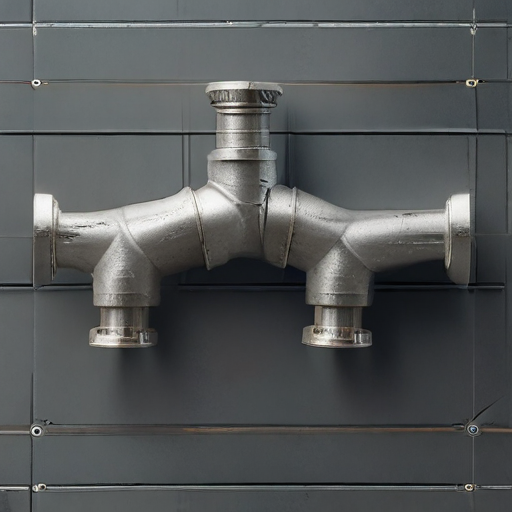
List “y fittings” Project Types for Different Industries
“Y fittings” are versatile components used in various industries to split or merge fluid flows. Below are some project types across different industries that employ Y fittings:
1. Plumbing and Construction:
– Water Supply Systems: Directing water flow to multiple fixtures.
– Drainage Systems: Splitting wastewater flow for efficient drainage.
– Irrigation Systems: Distributing water to various sections in agricultural fields.
2. HVAC (Heating, Ventilation, and Air Conditioning):
– Air Duct Systems: Splitting airflow to different rooms or zones.
– Condensate Drainage: Routing condensate to multiple drain lines.
– Refrigeration Systems: Dividing refrigerant flow between multiple evaporators.
3. Automotive Industry:
– Fuel Systems: Splitting fuel delivery to multiple engine cylinders.
– Cooling Systems: Diverting coolant to different parts of the engine.
– Exhaust Systems: Merging exhaust flows from multiple pipes.
4. Manufacturing and Industrial Processing:
– Chemical Processing: Directing chemicals to various reactors or processing units.
– Food and Beverage Production: Splitting or merging food-grade fluids.
– Pharmaceutical Manufacturing: Distributing high-purity water or other fluids.
5. Oil and Gas Industry:
– Pipeline Systems: Dividing or combining flows of oil, gas, or other hydrocarbons.
– Hydraulic Fracturing: Distributing fracturing fluid to multiple locations.
– Refineries: Managing various fluid streams through splitting and merging.
6. Agriculture:
– Fertilizer Application: Distributing liquid fertilizers evenly across fields.
– Pesticide Spraying: Splitting pesticide flow for large-area coverage.
– Livestock Watering Systems: Dividing water supply for multiple drinking stations.
7. Healthcare and Laboratories:
– Medical Gas Supply: Distributing gases like oxygen to various outlets.
– Central Sterile Services: Directing sterilization fluids in healthcare facilities.
– Biotechnology Labs: Managing fluid flows in experimental setups.
8. Fire Protection Systems:
– Sprinkler Systems: Distributing water to multiple sprinkler heads.
– Foam Fire Suppression: Directing foam to different discharge points.
Y fittings serve critical roles in managing fluid dynamics efficiently across these varied applications.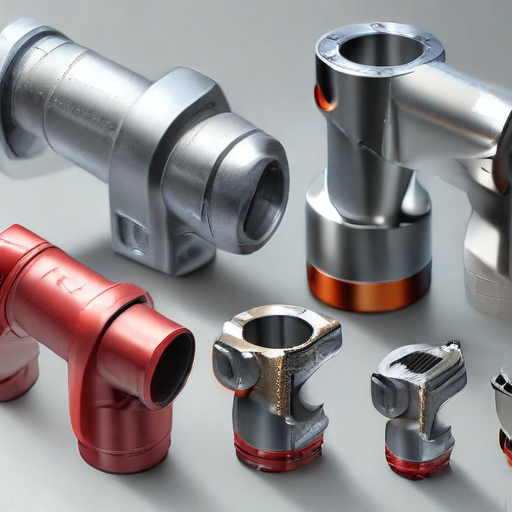
y fittings Accessories Upgrades and Custom Manufacturing Options
Y fittings are essential components in various plumbing, HVAC, and industrial systems, designed to split or combine fluid flow efficiently. When considering accessories and upgrades, as well as custom manufacturing options for Y fittings, several key factors come into play.
Accessories:
1. End Caps and Plugs: For temporarily sealing off unused branches, ensuring system integrity during maintenance.
2. Gaskets and Seals: Essential for leak prevention, available in materials such as rubber, silicone, and EPDM to match specific application requirements.
3. Flanges and Couplings: Facilitate easier connection and disconnection of fittings, enhancing maintenance efficiency and system flexibility.
4. Clamps and Brackets: Provide secure mounting and support to mitigate stress on piping systems.
5. Strainers and Filters: Prevent debris from entering the system, safeguarding downstream components.
Upgrades:
1. Material Enhancements: Utilizing high-grade materials like stainless steel, PVDF, or Hastelloy for improved corrosion resistance and durability.
2. Coatings and Linings: Applying specialized coatings such as Teflon or epoxy to enhance chemical resistance and flow efficiency.
3. Advanced Seals: Incorporate O-rings made of advanced polymers for superior sealing under extreme conditions.
4. Pressure and Temperature Ratings: Customizing fittings to handle higher pressures and temperatures for demanding applications.
Custom Manufacturing Options:
1. Tailored Dimensions: Custom sizing to fit unique system requirements, providing seamless integration.
2. Specialized Angles: Manufacturing Y fittings with non-standard branch angles to accommodate specific piping layouts.
3. Custom End Connections: Designing fittings with various end types, such as threaded, welded, or flanged, to match system specifications.
4. Integration of Sensors: Incorporating ports for pressure or temperature sensors, enabling real-time system monitoring.
5. Compliance with Industry Standards: Ensuring custom fittings meet or exceed relevant standards like ASME, ISO, or ASTM for quality assurance.
Through the thoughtful selection of accessories, upgrades, and customization options, Y fittings can be optimized for peak performance and longevity in any application.
List Quality Control and The Manufacturing Process of “y fittings”
Quality Control and Manufacturing Process of “Y Fittings”
Manufacturing Process:
1. Design and Specification: Engineers draft detailed blueprints specifying dimensions, materials (commonly metals or plastics), and tolerance levels.
2. Material Selection: Raw materials are chosen based on design requirements, typically involving metals like stainless steel or plastics such as PVC.
3. Molding or Casting:
– Plastic Y Fittings: Injection molding involves melting plastic pellets and injecting them into a mold.
– Metal Y Fittings: Casting involves pouring molten metal into a mold and allowing it to cool and harden.
4. Machining: Post-molding/casting, fittings might undergo machining for precision shaping and creating threads. This ensures exact dimensions and smooth surfaces.
5. Heat Treatment: For metal fittings, heat treatment processes like annealing enhance strength and durability.
6. Surface Finishing: Processes like polishing, coating, or painting are applied to protect the surface and improve appearance and performance.
Quality Control:
1. Incoming Material Inspection: Raw materials are checked for compliance with specified standards, including composition and quality.
2. In-Process Monitoring: Continuous monitoring during manufacturing ensures adherence to design specs. Techniques include:
– Visual Inspection: Checking for obvious defects or anomalies.
– Dimensional Checks: Using calipers, micrometers, and gauges to verify measurements.
3. Non-Destructive Testing (NDT): Techniques like ultrasonic testing, radiography, or dye penetrant tests detect internal defects without causing damage.
4. Hydrostatic or Pneumatic Testing: Pressure tests check for leaks and integrity under operational conditions.
5. Batch Testing: Random sampling from production batches ensures statistical quality control, providing a reliable gauge of overall product quality.
6. Final Inspection: A comprehensive inspection before packaging ensures each fitting meets all specifications and standards.
Conclusion:
The production of “Y fittings” involves a meticulous process from design to finishing, incorporating stringent quality control measures at multiple stages to ensure reliability and performance.
How to use “y fittings”
Using “Y Fittings”
A Y fitting, often referred to as a wye connector, is a plumbing component used to split or combine fluid flow. It resembles the letter “Y,” where the single inlet splits into two outlets (or vice versa), forming a 45-degree angle with the main line, which helps maintain flow efficiency and minimize turbulence.
Applications:
1. Plumbing Systems: Y fittings are commonly found in waste management systems, directing wastewater from different sources into a main drain line.
2. Irrigation: They help distribute water from a single source to multiple irrigation lines.
3. HVAC Systems: Used to split airflow to different ducts, facilitating uniform distribution.
Installation:
1. Identify Pipe Material: Ensure the Y fitting matches the material of the pipes (e.g., PVC, copper, steel).
2. Cut Pipes: Measure and cut the pipes to the appropriate length using a pipe cutter or saw, ensuring clean, straight edges.
3. Deburr and Clean: Remove any burrs and clean the pipe ends to ensure a smooth fit.
4. Apply Primer and Cement (for PVC): For PVC fittings, apply primer to the outside of the pipe ends and the inside of the fitting. Then, apply PVC cement to the same areas.
5. Join and Hold: Insert the pipes into the Y fitting, ensuring they are fully seated. Hold them in place for a few seconds to allow the cement to set.
6. Secure and Test: For metal fittings, you may need to solder or use compression fittings. Once connected, secure the pipes and test for leaks by running water or fluid through the system.
Tips:
– Use Proper Tools: Using the right tools ensures a secure fit and prevents damage to the pipes or fitting.
– Check Local Codes: Always adhere to local plumbing codes and regulations.
Maintenance:
Regularly inspect Y fittings for leaks or corrosion, especially in systems that handle aggressive chemicals or are exposed to extreme conditions.
By understanding these steps and applications, you can effectively utilize Y fittings in various plumbing and fluid distribution systems.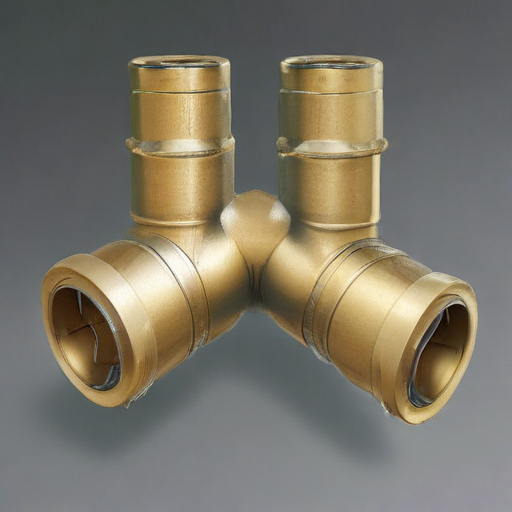
“y fittings” Comparative Analysis
Comparative Analysis of Y Fittings
Y fittings, also known as wye fittings, are essential components in plumbing and industrial piping systems. They merge or split fluid flow within a system, facilitating efficient distribution or collection. This analysis compares Y fittings based on various criteria: material, application, cost, and installation ease.
#### Material
1. PVC (Polyvinyl Chloride):
– Pros: Lightweight, corrosion-resistant, cost-effective.
– Cons: Limited temperature tolerance, can degrade under UV exposure.
2. Stainless Steel:
– Pros: High durability, excellent temperature and pressure resistance, corrosion-resistant.
– Cons: Expensive, heavier, and potentially overkill for low-demand applications.
3. Copper:
– Pros: Good thermal resistance, antibacterial properties, reliable longevity.
– Cons: Higher cost, prone to theft, developing “pinhole leaks” over time.
4. Brass:
– Pros: Good mechanical properties, corrosion resistance, moderate cost.
– Cons: Lower temperature tolerance compared to stainless steel.
#### Application
1. Residential Plumbing:
– PVC, Copper: Preferred for their corrosion resistance and ease of installation. Copper offers superior thermal properties for hot water systems.
2. Industrial Piping:
– Stainless Steel, Brass: Ideal due to their ability to withstand high pressures and temperatures. Beneficial in chemical processing where corrosion resistance is critical.
#### Cost
– PVC: Most economical, suitable for budget-sensitive projects.
– Copper and Brass: Mid-range, balancing cost and performance.
– Stainless Steel: High-end, justified by longevity and robustness, suitable where performance outweighs cost considerations.
#### Installation Ease
– PVC: Easiest, primarily glued connections.
– Copper: Moderate, usually soldered.
– Brass: Threaded or soldered, requires careful handling.
– Stainless Steel: Most challenging due to threading or welding requirements.
Conclusion
The choice of Y fitting significantly depends on specific application needs. PVC suits residential uses due to its affordability and installation ease. Stainless steel is unmatched for demanding industrial environments, despite its higher cost. Copper and brass offer valuable mid-tier options, balancing performance and expense effectively.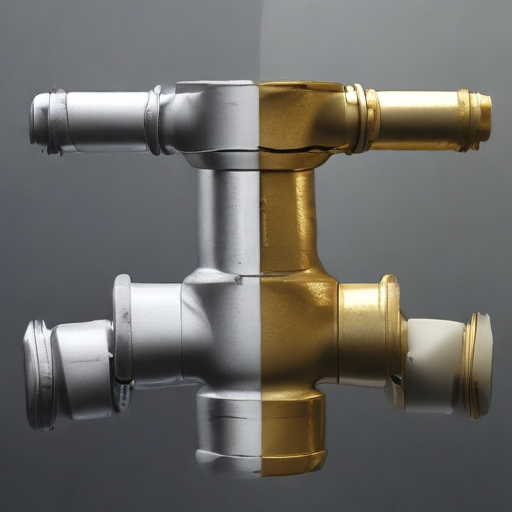
“y fittings” Warranty and Support
Y Fittings Warranty and Support
At Y Fittings, we stand by the quality and reliability of our products. Our Y fittings come with a comprehensive warranty to ensure your complete satisfaction and peace of mind. We offer a 1-year limited warranty from the date of purchase, covering defects in materials and workmanship. This warranty is void if the product is subjected to misuse, improper installation, or unauthorized modifications.
In the unlikely event you encounter an issue with our Y fittings, our dedicated support team is here to assist you. We provide prompt and professional customer service to address any concerns or questions. To initiate a warranty claim, please contact our support team with your proof of purchase and a detailed description of the issue. We aim to respond to all inquiries within 24-48 hours.
Our warranty process is straightforward and efficient. If the product is deemed defective, we will either repair or replace it at no additional cost to you. For further assistance, our support resources include a comprehensive FAQ section and detailed installation guides available on our website.
Your satisfaction is our priority, and we are committed to delivering high-quality, durable products backed by exceptional customer service. For any support needs, please reach out to us via email at support@yfittings.com or call our helpline at 1-800-123-4567.
Thank you for choosing Y Fittings.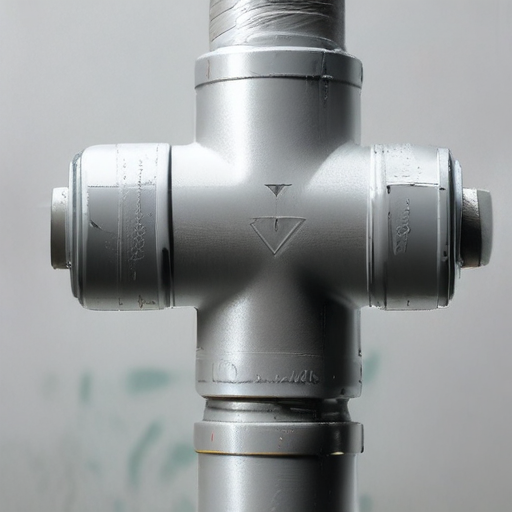
List “y fittings” FAQ
Y Fittings FAQ
1. What is a Y fitting?
A Y fitting is a type of pipe fitting that has three openings in the shape of a “Y.” It is used to connect or split fluid flow in plumbing, HVAC, or other piping systems.
2. What materials are Y fittings made from?
Y fittings can be made from various materials including PVC, stainless steel, brass, copper, cast iron, and polypropylene. The choice of material depends on the application and the type of fluid being transported.
3. Where are Y fittings commonly used?
Y fittings are commonly used in plumbing systems, irrigation, HVAC systems, and chemical processing lines. They are essential for applications requiring the division or merging of flow streams with minimal turbulence.
4. What sizes do Y fittings come in?
Y fittings come in various sizes to fit different pipe diameters, typically ranging from 1/2 inch to several inches in diameter. Exact sizing should match the specific requirements of your piping system.
5. How do I install a Y fitting?
Installation methods vary depending on the material of the Y fitting and the piping. Common installation techniques include solvent welding for PVC, soldering for copper, and threading for metal fittings.
6. What are the advantages of using a Y fitting?
Y fittings provide a smooth and efficient way to split or combine flow paths with minimal pressure loss. They are also versatile and can be used in various configurations and applications.
7. Can Y fittings be used for both liquid and gas applications?
Yes, Y fittings are suitable for both liquid and gas applications. The material and design should be chosen based on the specific requirements, including pressure and temperature conditions.
8. How do I choose the right Y fitting for my application?
Consider the material compatibility, size, pressure rating, and the type of fluid being transported. Consulting industry standards and manufacturer guidelines will also help in selecting the appropriate fitting.
9. Are there any special maintenance requirements for Y fittings?
Regular inspections for leaks or corrosion are recommended, especially in high-stress or corrosive environments. Maintenance needs will vary based on material and application.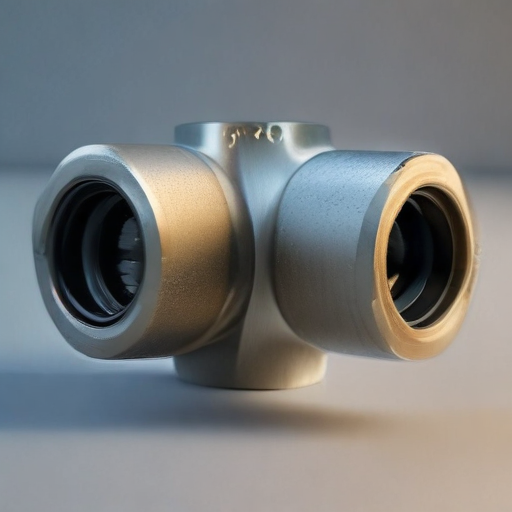
Top 10 FAQ with answer about y fittings for Buyer Sourcing from China
Certainly! Below are the top 10 frequently asked questions (FAQ) about sourcing Y fittings from China, along with concise answers:
1. What materials are Y fittings available in?
Y fittings are commonly available in materials such as stainless steel, brass, PVC, and nylon. The choice of material depends on the application and compatibility with the fluids being transported.
2. How can I ensure the quality of Y fittings sourced from China?
To ensure quality, request samples before placing bulk orders, check certifications (like ISO), and consider working with suppliers with a good track record. Onsite visits and third-party inspections are also advisable.
3. What is the minimum order quantity (MOQ) typically required by suppliers?
The MOQ varies by supplier but generally ranges from 500 to 1,000 pieces. Some suppliers may offer flexibility depending on the nature of the business relationship.
4. Can suppliers in China customize Y fittings according to my specifications?
Yes, many Chinese suppliers offer customization options, including different sizes, threading, and materials. Ensure you clearly communicate your specifications and requirements.
5. What are the lead times for production and delivery?
Lead times typically range from 2 to 8 weeks, depending on the order size, customization, and supplier’s production schedule. Shipping times can vary from 1 to 5 weeks based on the shipping method and destination.
6. How can I verify the legitimacy of a Chinese supplier?
Verify the supplier’s business license, check reviews, and request references. Platforms like Alibaba offer verified suppliers and trade assurance services, which add an extra layer of security.
7. What payment terms do Chinese suppliers usually prefer?
Common payment terms include 30% upfront and 70% upon shipment (FOB terms). Methods include wire transfers, letters of credit, or escrow services through trading platforms.
8. Are there risks involved in importing Y fittings from China?
Risks include quality discrepancies, delays, and communication barriers. Mitigate these by thorough vetting, clear contracts, and continuous communication.
9. What certifications should I look for when sourcing Y fittings?
Look for ISO 9001 for quality management, CE marking for European markets, and specific certifications relevant to the materials and use case (e.g., NSF for potable water applications).
10. How can I reduce shipping costs when ordering Y fittings from China?
Optimize shipping by consolidating orders, choosing sea freight for large volumes, and working with logistics companies to get competitive rates. Ensuring efficient packing can also reduce costs.
These answers should provide a solid foundation for anyone looking to source Y fittings from China efficiently and securely.

